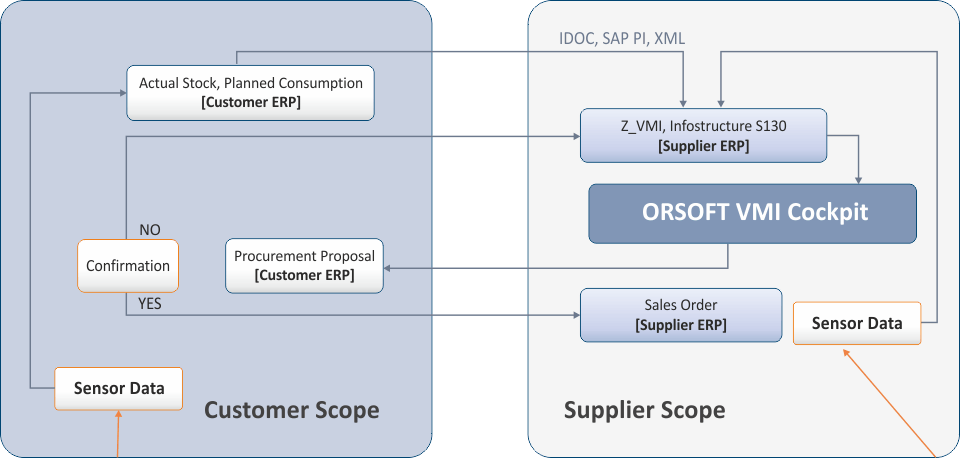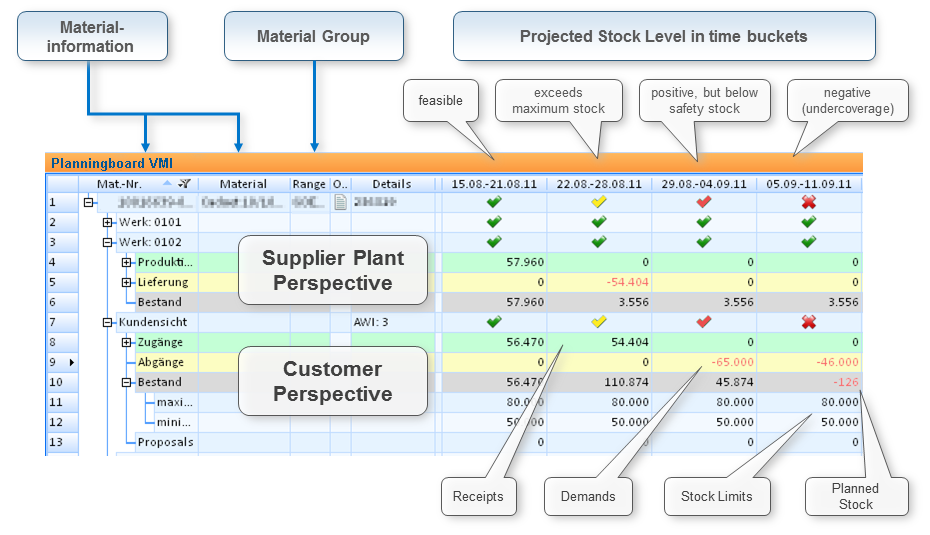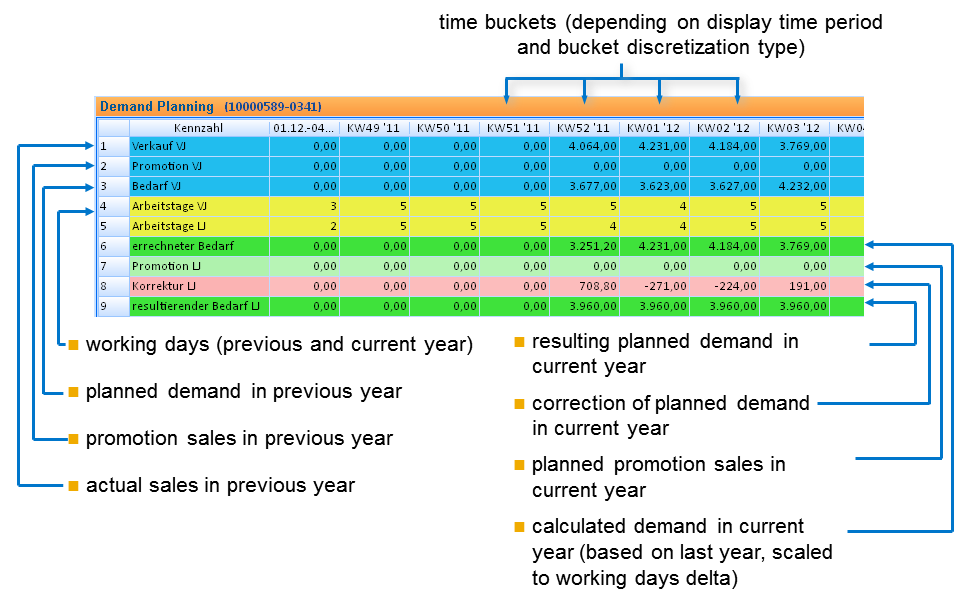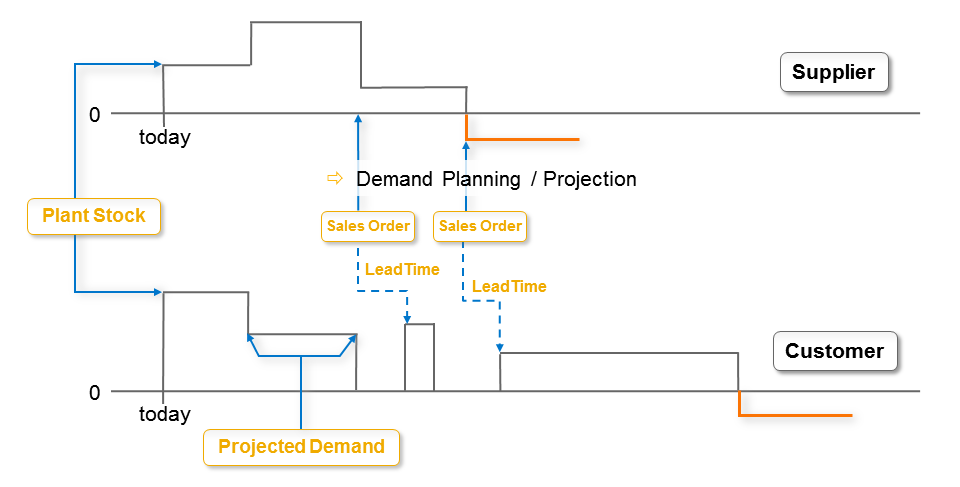Vendor Managed Inventory in the Food Industry
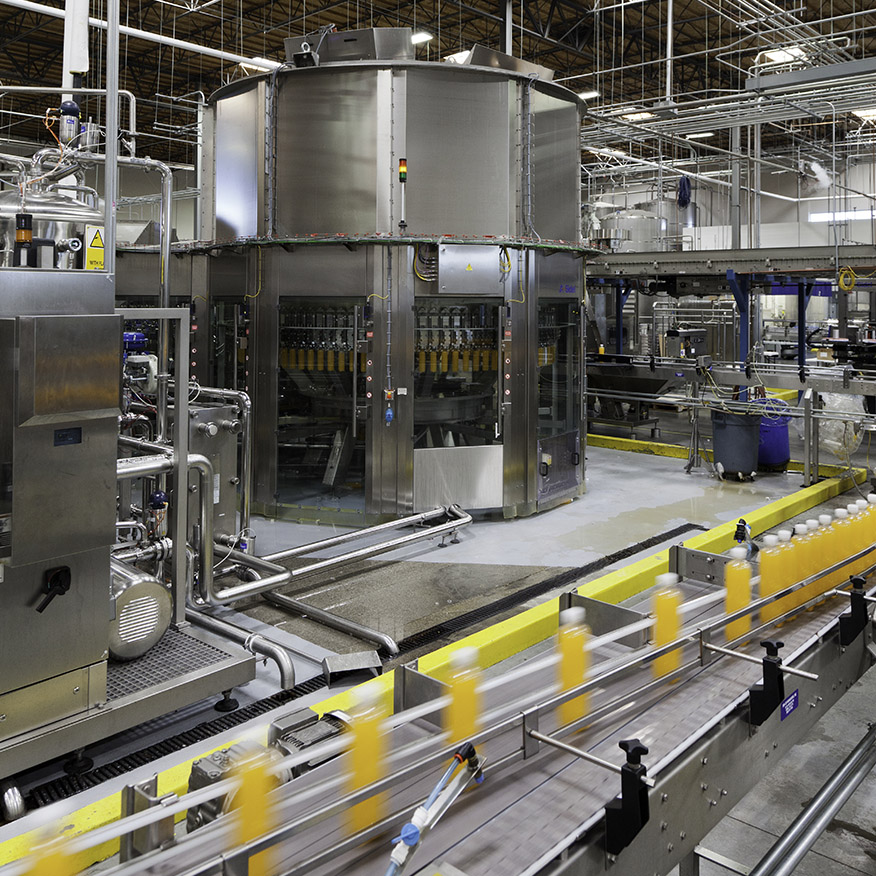
Vendor Managed Inventory (VMI) is a modern approach to optimize cross-company supply chains. Large retail chains within the food industry attempt to hand over the responsibility for the on-site availability of goods in the supermarkets to the suppliers. In this context, retailers are ready to provide their suppliers with information regarding inventory and consumption of those goods in their stores and regional distribution centers.
For this purpose, well-established technical standards exist, in particular with regard to SAP ERP / SAP S/4HANA. These data are then made available to the SAP ERP / SAP S/4HANA system at the supplier; however, they are usually processed and evaluated manually. These systems often lack functions for automated replenishment control, which would be based on:
- minimum or maximum requirements
- range of coverage for stocks
- rules for replenishment strategies
- consideration of data related to shelf life, such as expiration date and remaining shelf life
- restrictions
The VMI cockpit is a tool for suppliers to evaluate data provided by the customer and eventually create sales projections and generate procurement proposals for the customer. It is possible to consider additional constraints when generating procurement proposlas, such as limited production capacity or limited availability of raw materials.
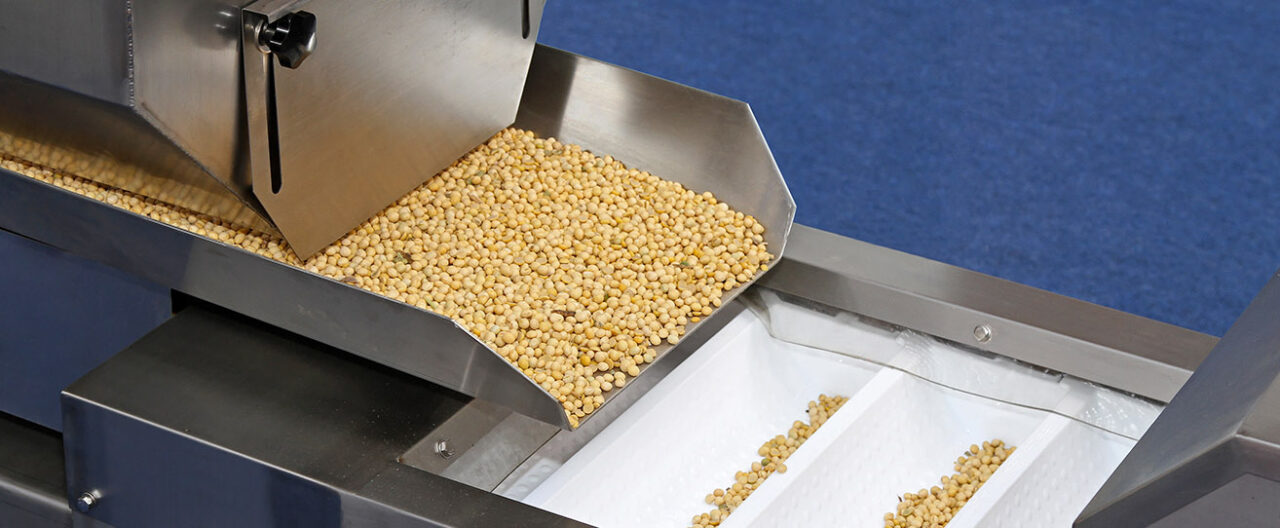
VMI Cockpit
Data provided by customers can be transferred automatically to the SAP ERP / SAP S/4HANA system of the supplier by standardized interfaces such as EDI.
The VMI cockpit at the supplier uses this data to evaluate the stock and requirements situation of the customer material and to create procurement proposals for the customer. These can be checked by the customer and will be either confirmed or rejected.
If the customer does not generate forecasts, a function for generating forecasts can be activated in the VMI Cockpit so that a demand over time in the future can be determined from this information and the inventory at the customer.
The VMI Cockpit features an intuitive user interface that alerts users with regard to exception situations that occur for individual materials in specific time buckets by colored symbols that follow the “traffic light” metaphor (green, yellow, red).
The stock and requirement situation is evaluated from both the customer perspective and from the supplier plants perspective. The latter allows you to recognize projected supply shortages and to resolve these in the short-term plan.
The user interface provides functions to filter and sort the information and to drill down into details.
The automated replenishment planning process creates simulated procurement proposals. The user must check these for plausibility before saving them to SAP ERP / SAP S/4HANA, this ensures a high quality of proposals with minimal manual effort.
The automated replenishment planning process can apply to various customer-specific rules. For example these rules may consider safety stock and maximum stock at the customer, defined supply batch sizes and rounding (handling unit size), supply calendars and bundling of supplies.
In addition, the process can consider limited production capacity of the supplier and create an optimal distribution of limited production quantities that may result from these capacity restrictions or from raw material availability restrictions.
Integration with SAP ERP and SAP S/4HANA
The application is fully integrated with SAP ERP / SAP S/4HANA and only uses master data and transactional data from SAP ERP / SAP S/4HANA. It requires no additional server hardware.
